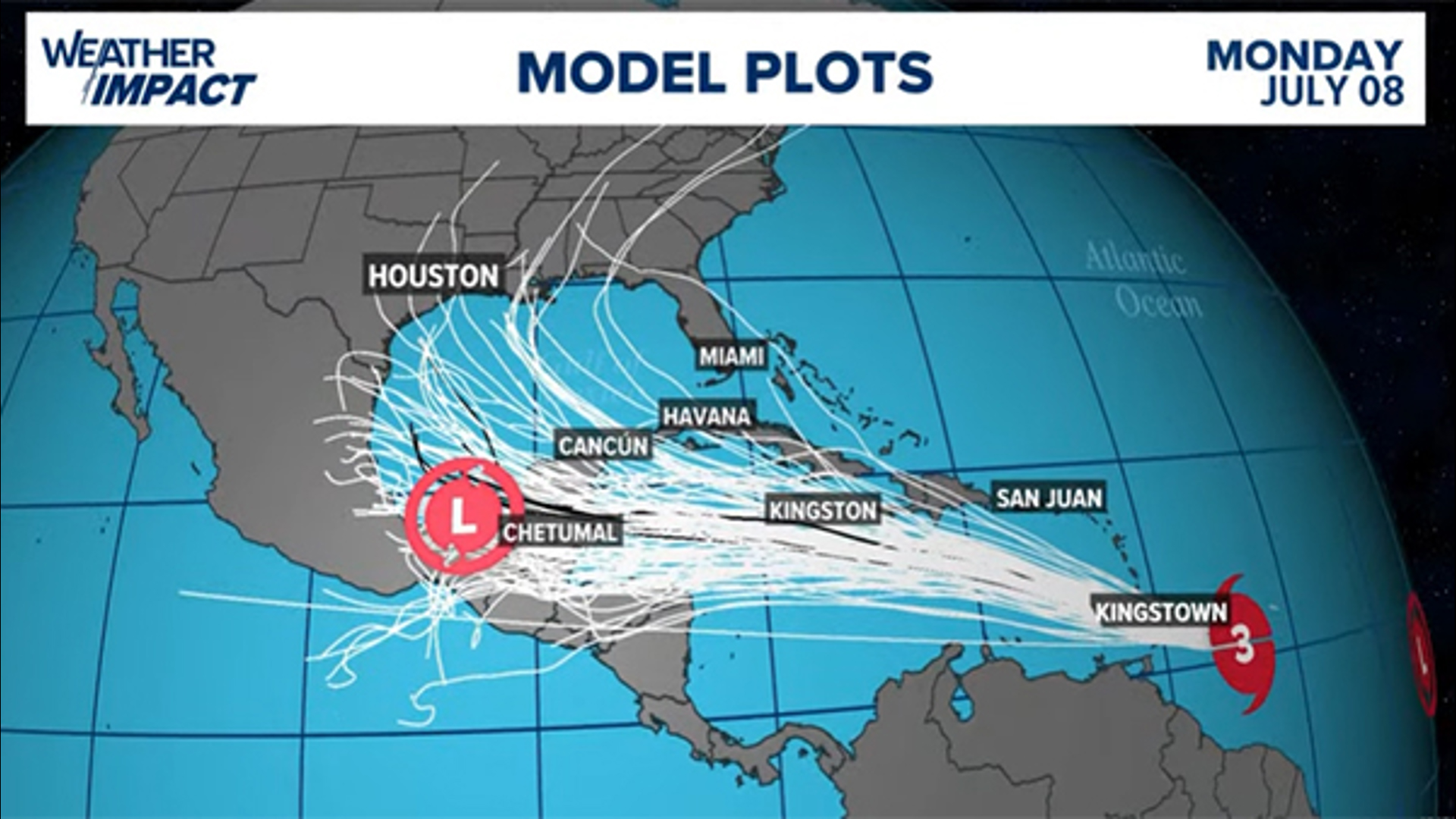Hurricane Beryl’s Path and Intensity

Hurricane beryl path tracker – Hurricane Beryl, the first named storm of the 2023 Atlantic hurricane season, has formed in the western Atlantic Ocean. The storm is currently a Category 1 hurricane with maximum sustained winds of 85 mph (137 km/h). Beryl is expected to strengthen to a Category 2 hurricane by Tuesday and could reach Category 3 strength by Wednesday.
The hurricane is currently located about 1,000 miles (1,600 km) east of the Lesser Antilles and is moving west-northwest at 15 mph (24 km/h). The storm is expected to turn more to the north on Tuesday and Wednesday, and could make landfall in the southeastern United States by the end of the week.
Potential Impact Areas and Evacuation Zones, Hurricane beryl path tracker
The National Hurricane Center has issued hurricane watches for the coast of Florida from Miami to Jacksonville. Tropical storm watches have been issued for the Bahamas, Cuba, and the coast of South Carolina from Charleston to Myrtle Beach.
Residents in the affected areas should monitor the storm’s progress and be prepared to evacuate if necessary. Evacuation zones have been established in coastal areas, and residents should be familiar with their evacuation routes.
Historical Data and Past Impacts of Hurricane Beryl: Hurricane Beryl Path Tracker
![]()
Hurricane Beryl, a recurring tropical cyclone in the Atlantic Ocean, has a history of making landfall and causing significant impacts. Understanding these past occurrences provides valuable lessons for current preparedness measures.
Hurricane Beryl of 2012
Hurricane Beryl of 2012 formed as a tropical depression near the Lesser Antilles and rapidly intensified into a Category 3 hurricane. It made landfall in northeastern Florida, bringing heavy rainfall and strong winds that resulted in widespread power outages and flooding. The storm also spawned tornadoes that caused additional damage.
Hurricane Beryl of 2018
Hurricane Beryl of 2018 was a Category 1 hurricane that formed in the eastern Atlantic Ocean and made landfall in North Carolina. The storm brought heavy rain and strong winds, causing localized flooding and power outages. However, the impact was relatively less severe compared to the 2012 hurricane due to timely evacuations and improved infrastructure.
Lessons Learned from Past Hurricanes
Past Hurricane Beryl events have highlighted the importance of:
– Early warning systems and timely evacuations to minimize casualties and property damage.
– Robust infrastructure, such as reinforced buildings and improved drainage systems, to withstand the impact of strong winds and heavy rainfall.
– Community preparedness plans and public education campaigns to raise awareness and encourage proactive measures.
– Collaboration between government agencies, emergency responders, and local communities to ensure effective coordination and response.
Successful Evacuations and Response Efforts
During Hurricane Beryl of 2018, timely evacuations and well-coordinated response efforts led to a successful mitigation of the storm’s impact. Local authorities issued mandatory evacuation orders well in advance, allowing residents ample time to seek safety. Emergency shelters were set up and stocked with essential supplies, and emergency responders were deployed to assist with evacuations and provide aid.
Tracking Hurricane Beryl’s path is crucial for staying informed about its potential impact. While Clarksville weather is not directly in the storm’s path, it’s essential to stay updated on the latest forecasts and potential changes in its trajectory. By visiting the Clarksville weather website, you can access detailed weather reports and stay ahead of any potential weather-related disruptions.
Hurricane Beryl’s path tracker helps us anticipate its destructive force, but it’s only a fraction of the story. For a comprehensive understanding, we turn to weather radar , a technology that paints a real-time picture of the storm’s movement and intensity.
By integrating weather radar data, the hurricane Beryl path tracker becomes a more potent tool, guiding us through the unpredictable dance of nature’s fury.